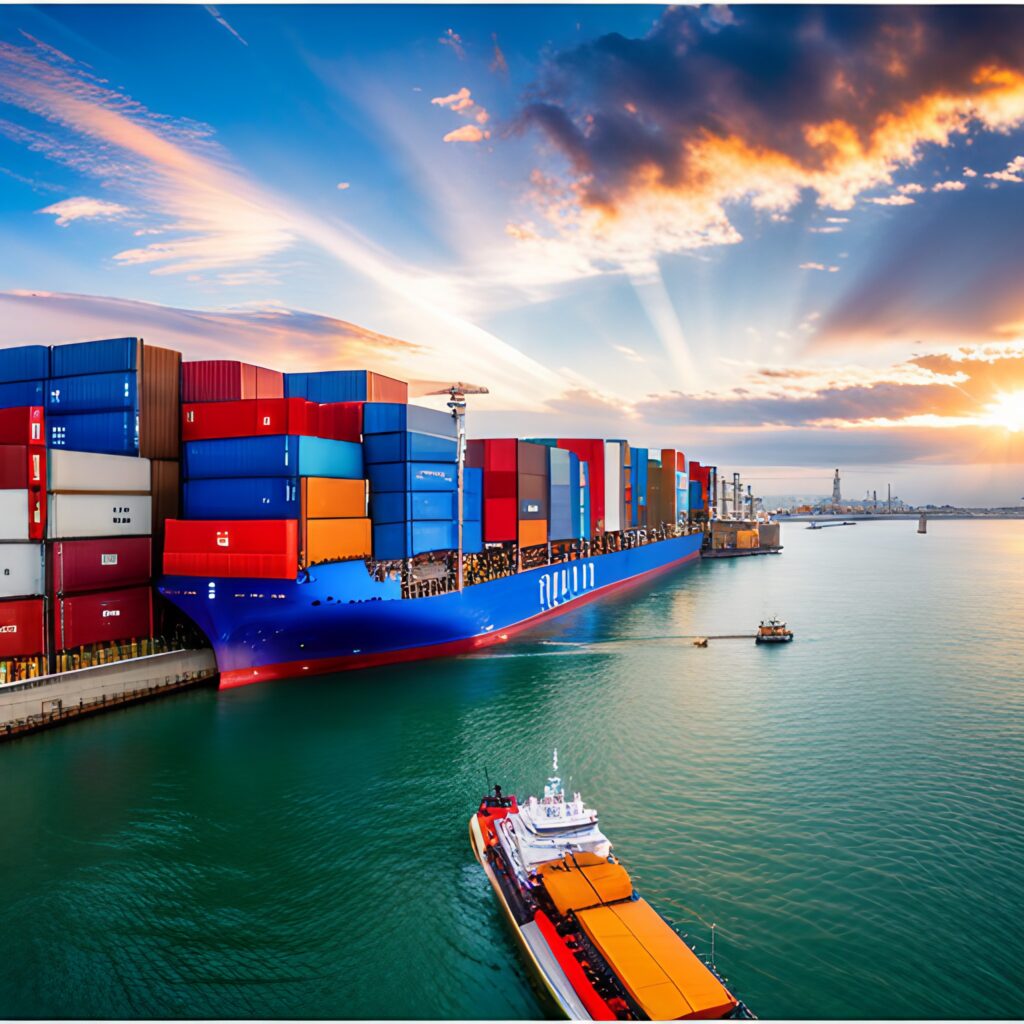The global supply chain has faced unprecedented challenges in recent years. From geopolitical tensions, such as trade wars and international conflicts, and natural disasters, including earthquakes, floods, and pandemics, to market volatility driven by fluctuating demand and supply, supply chain disruptions have become a critical issue for businesses worldwide. These disruptions not only affect goods and services delivery but also have significant financial implications for companies.
Businesses must incorporate technology into their digital transformation strategies in order to remain competitive and build resilience. Successful technology integration, including AI and other advanced technologies, can enhance supply chain visibility and foster collaborative partnerships. Digital transformation initiatives should focus on improving key performance indicators and streamlining business processes.
By adopting the latest technologies and digital tools, such as machine learning, blockchain, and mobile devices, companies can adapt quickly to market changes and customer demands. Businesses’ digital transformation efforts will ensure they can withstand future uncertainties and meet customer demands effectively.
In conclusion, digital transformation strategies and advanced technology tools are integral parts of modern supply chain management. Through strategic innovation and a commitment to digital technology, businesses can navigate the complexities of the global supply chain. This will enable them to succeed.
Transforming a construction organization
During my time as a consultant in the construction industry, I successfully led a digital transformation strategy for a well-known company facing major disruptions. They dealt with outdated processes, delays in material deliveries, rising costs, and inefficiencies in their procurement processes. This jeopardized their project timelines and financial stability.
To tackle these issues, I spearheaded a comprehensive digital transformation initiative. We began by integrating advanced supply chain management software applications, which provided real-time materials tracking, streamlined procurement processes, and offered predictive analytics. This tech integration enabled the company to anticipate potential disruptions and take preemptive actions, aligning with key performance indicators.
We also introduced IoT sensors to critical assets and materials to continuously monitor their location and status. This ensures data quality and accountability at every stage of the supply chain. Furthermore, migrating to cloud-based solutions enhances data sharing and collaboration among all stakeholders, including suppliers and subcontractors.
Integrating these digital technologies yielded impressive results. The company achieved a 30% reduction in delays, a 20% decrease in procurement costs, and significantly improved project completion rates. By embracing these digital transformation strategies, they overcame immediate challenges and built resilience for long-term growth in an increasingly volatile market.
This case serves as an example of how integrating technology tools and leveraging digital transformation efforts can drive fundamental changes in business processes and financial management. This ensures companies remain competitive.
The Increasing Challenges of Global Supply Chains
Supply chain managers, senior managers, and industry leaders know the cascading effects of a disrupted supply chain. Delays, increased materials costs, and inefficiencies can cripple business processes and erode customer trust. When such disruptions occur, companies often scramble to find alternative solutions, leading to additional expenses and further delays. The ripple effect can be profound, impacting not just immediate operations but also long-term business strategies.
Key Factors Contributing to Disruptions
- Geopolitical Tensions: Trade wars, sanctions, and political instability can disrupt supply chains. Sudden tariffs can spike costs, and political chaos in a key supplier country can lead to unexpected supply interruptions. Companies need to stay alert and adapt quickly to these fast-changing conditions.
- Natural Disasters: Earthquakes, floods, hurricanes, and other natural events can halt production and mess up logistics networks, like how a major earthquake can delay shipments for weeks or even months. Having solid risk management strategies and backup plans is crucial for building resilient supply chains.
- Market Volatility: Demand fluctuations, sudden price changes, and economic downturns add layers of complexity to supply chains. Market conditions force companies to be nimble and responsive. For example, a demand spike can strain supply chains, while economic recessions can dampen consumer behavior, affecting inventory levels and cash flow.
Understanding these factors and developing strategies to mitigate their impact is key to maintaining resilient and efficient supply chains. Companies that invest in advanced analytics, diversify their supplier base, and build strong relationships with their partners will be better equipped to handle these challenges.
Moreover, bringing technology into the mix through digital transformation initiatives, like AI and machine learning, can significantly improve supply chain management. Leaders who focus on integrating evolving technologies and improving data quality can drive major changes and quickly adapt to evolving tech and customer demands, keeping businesses competitive.
Technological advancements and digital transformation aren’t just about adopting the latest tech but also about revamping old processes and systems. This is to boost the customer experience and hit key performance indicators. With a strategic approach to technology integration, businesses can streamline operations, improve financial management, and enhance overall efficiency.
Digital Transformation’s Promise
Despite these challenges, businesses have the chance to turn disruptions into innovation opportunities. By successfully integrating technology and leveraging tools like AI, IoT, and blockchain, companies can create more resilient and agile supply chains, reducing external shocks. Digital transformation not only cuts operational risks but also opens up new pathways to growth and efficiency. By integrating technology into their business processes and adopting comprehensive digital strategies, businesses can stay ahead of the curve in a fast-evolving market landscape. The key to this transformation lies in focusing on data quality, incorporating new technologies, and quickly adapting to consumer behavior and customer demands. Leaders must prioritize initiatives that align with the organization’s key performance indicators and overall business strategy to ensure long-term sustainability.
Artificial intelligence and Machine Learning
AI and machine learning have become game-changers in supply chains. These technologies help companies fine-tune inventory management and predict customer demands more accurately. With AI and ML algorithms diving into heaps of data, they spot patterns and trends that humans might miss, leading to smoother business processes.
Example: Amazon uses AI and ML to anticipate customer needs, cutting delivery times and costs. This forward-thinking move has kept Amazon competitive, even during tough times like COVID-19. By foreseeing demand ups and downs, Amazon smartly allocates resources, ensuring products are available when and where needed.
Blockchain technology
Blockchain brings transparency, efficiency, and security to supply chains. This technology provides a safe, unchangeable ledger that everyone involved can access, ensuring data stays intact and reducing fraud risks. Each transaction is recorded and time-stamped, creating a clear audit trail.
Example: Maersk, a giant in shipping, uses blockchain to boost transparency and efficiency in its supply chains. This move has slashed paperwork and administrative costs while improving traceability from origin to destination.
Automation and data analytics
Automation and data analytics are shaking up supply chains with improved accuracy and speed. Automated systems handle repetitive tasks like sorting, packing, and labeling, freeing humans for more strategic work. Data analytics uses statistical and computational methods to gain valuable insights from data.
Example: Home Depot has poured funds into supply chain automation and data analytics. With these technologies, the company has nailed down inventory tracking and delivery processes. Automated systems ensure products are always ready for shipment, while data analytics predict customer preferences for a better shopping experience.
The Internet of Things (IoT).
IoT devices enable real-time monitoring and management of production and distribution processes. These connected gadgets gather and send data, helping companies make quick, informed decisions. Sensors and smart tags track goods’ status and location, monitor conditions, and detect issues early.
Example: Nestlé uses predictive analytics and IoT devices to monitor its supply chain. This method ensures consistent product quality and minimizes disruptions, keeping customer trust intact. With IoT, Nestlé can track storage conditions, ensuring perishable goods stay fresh until consumption.
Bringing tech into supply chains is a key part of digital transformation, helping businesses build resilience, stay competitive, and improve performance. From AI and ML to blockchain, automation, and IoT, these initiatives are essential changes driving supply chain management’s future.
Digital freight platforms
Digital freight platforms provide real-time visibility into the supply chain, helping businesses navigate digital transformation strategies and adapt quickly to changes. These platforms act as a central hub for integrating technology tools, managing freight bookings, and analyzing performance metrics, ultimately improving business processes.
Example: Flexport offers a digital freight platform that showcases successful tech integration into the supply chain. This digital transformation initiative delivers real-time insights, enabling businesses to optimize logistics and respond swiftly to disruptions. By using Flexport’s technology tools, companies can track goods, anticipate delays, and adjust their strategies accordingly. This ensures a smooth and efficient supply chain, helping businesses stay competitive and meet customer demands.
Flexport’s platform combines various digital technologies, from mobile devices to artificial intelligence, to enhance data quality and streamline operations. This not only improves the customer experience but also builds resilience against disruptions, making it a crucial part of any successful digital transformation strategy.
Insights from industry leaders
Industry experts agree on the critical role digital transformation plays in building resilient supply chains. This transformation is essential for companies to remain competitive in a fast-changing global market.
Elon Musk, CEO of Tesla and SpaceX, highlights the importance of automation and AI in streamlining business processes and reducing human labor dependency. He notes how these technologies can lead to more efficient production, cost savings, and higher manufacturing precision.
Ginni Rometty, former CEO of IBM, emphasizes blockchain’s transformative potential in ensuring data quality and security. She points out how blockchain can create transparent, tamper-proof records, enhancing trust among stakeholders and reducing fraud risks.
Tim Cook, CEO of Apple, underscores the need for advanced analytics and IoT to maintain agility and responsiveness in a rapidly changing market. He believes that leveraging big data and connected devices allows companies to better understand consumer behavior, optimize supply chain operations, and quickly adapt to customer demands.
Successfully integrating cutting-edge technologies is key to organizations driving digital transformation. Senior managers should focus on incorporating tools like software applications and machine learning to fundamentally change their business models and improve performance metrics. This approach helps businesses adapt quickly, thrive amid new challenges and opportunities.
Conclusion
Supply chain resilience lies in digital transformation strategy and tech integration. By leveraging advanced digital technologies like AI, blockchain, automation, IoT, and automated freight platforms, businesses can cushion the blow of disruptions. However, they can also build stronger and more agile supply chains for the future.
AI can predict demand fluctuations and optimize inventory management, while blockchain ensures transparency and traceability. Automation smooths out operations, reducing human error and boosting efficiency. IoT offers real-time monitoring of goods in transit, and digital freight platforms make logistics and transportation management more efficient. Together, these digital transformation efforts create a strong approach to fortifying supply chains against unexpected challenges.
Integrating modern tools into business processes helps companies stay competitive amid shifting consumer behavior and customer demands. Integration means updating outdated processes and systems, improving data quality, and quickly adapting to evolving technologies. Digital transformation leaders should focus on areas like employee experience, remote work, and new hires to ensure a smooth transition.
Building a resilient supply chain requires tech know-how, key performance indicators and a business strategy. Companies must keep up with the latest technologies and software applications, constantly researching and incorporating cutting-edge technology to meet customer expectations and financial goals.
In the wake of COVID-19, digital transformation has become a key part of successful business models. Many schools, including middle schools, also focus on tech integration to enhance learning and classroom instruction. Tools like interactive whiteboards, mobile devices, and online learning platforms help students complete assignments and teachers improve classroom management.
As chief information officers and senior managers lead digital transformation projects, they must consider the impact on both new and existing staff. The goal is to drive changes that foster innovation and resilience across the organization.
A well-executed digital transformation strategy can help businesses quickly adapt to new challenges, build resilience, and thrive in a rapidly evolving landscape.
To stay competitive and resilient amid constant change, businesses must embrace digital transformation and innovation. We encourage decision-makers to take a close look at their current supply chain processes and find opportunities to integrate advanced technologies. Partnering with industry experts and investing in cutting-edge solutions can improve operational efficiency, cost savings, and customer satisfaction. Start your journey toward a more agile and robust supply chain today by exploring how AI, blockchain, automation, IoT, and digital freight platforms can transform your business operations.
Contact us now to schedule a consultation and discover the strategic advantages of transforming your supply chain. Let’s build a future-ready supply chain together.





